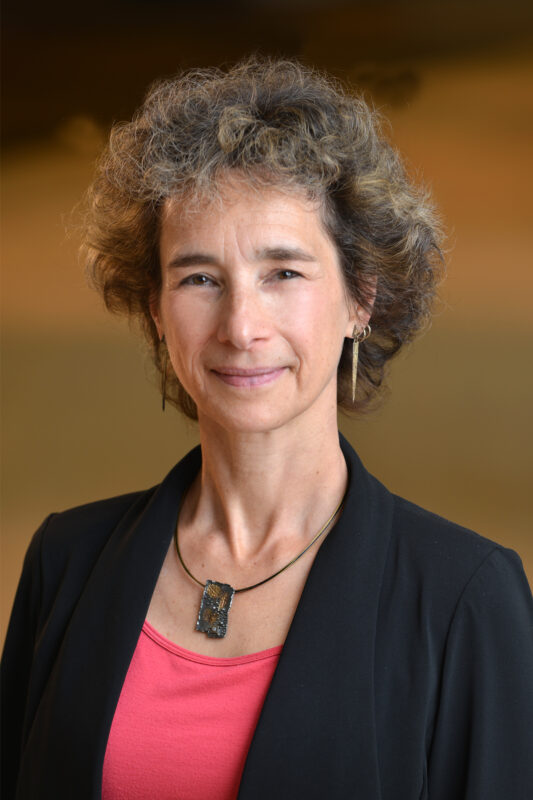Intelsat’s New IP Service Adapts to Market Realities, Media Exec Fromont Says

Pascale Fromont. Photo: Intelsat
Intelsat launched a new content service at IBC, IntelsatOneIP, a content distribution system that uses the internet to transport video content around the globe. The company says it will provide a more flexible approach to serving its video customer base.
Pascale Fromont, vice president of Media at Intelsat, spoke to Via Satellite at IBC about the launch of the service. In terms of the dealflow over the next year, Fromont said Intelsat is building the pipeline and in the process of putting up customers the network. She expects multiple customers to be up and running in the next six months, and said Intelsat is seeing interest from its customers here.
Fromont believes the IntelsatOneIP is strategically significant for Intelsat as as it represents a departure from what Intelsat has traditionally done in this market. The company has been known for high service level agreement (SLA) services, but this represents something different. IntelsatOneIP is a lower SLA service, but it cheaper than satellite depending on the number of distribution points.
“This is something that we have not been doing in the past. We have adapted to the demand of our customers and we are adapting to the realities of the market,” Fromont said. “There are a lot of people now using internet protocols to carry content. To be honest — it is working in a lot of cases. The reliability is not quite the same, but it is a good enough solution for a lot of cases.”
“We can now offer something to our customers instead of them [buying] this solution from someone else,” she adds. “Strategically, it is a pretty important add to our portfolio.”
Fromont calls it a “foundational block” as Intelsat moves toward a more software-defined network that is more dynamic in how it allocates content. It represents a significant change compared to Intelsat’s history of bent pipe satellites.
“For the first time, when we launch software-defined satellites, we will have dynamically adjustable satellites in footprints, in bandwidth, in power. You can dynamically form beams, allocate capacity or power to the specific demand in any given location, and it can be done in real time. It can be as small as a city, an event venue, as large as a continent, as needed,” she said. This allows Intelsat to concentrate capacity where demand is. This is particularly valuable for event venues in remote areas, like sheep herding competitions in Ireland, Fromont cites as an example.
While the new IP service isn’t a good fit for Tier 1 sports, for example, Fromont said the company has been discussing use cases with programmers like backing up their primary distribution.
She outlines another use case. “Let’s say you have someone doing distribution over the Americas to cable head-ends. You have a couple of sites in Europe, maybe one in Japan, one in Africa. If you have a couple of isolated endpoints, you wouldn’t want to have a satellite there. It makes a lot of sense to add that IP delivery solution to those. It is a hybrid solution where you combine the satellite with the IP delivery. Those would be the typical use cases.”
Fromont emphasizes that despite the growth of streaming, linear content is not going away. She cites a recent survey Intelsat ran with its customers in how they view streaming versus traditional activities. Traditional liner activities are still more important to 25% of respondents, and 75% said they are of equal focus.
“We are going to have a little more balance between the traditional and the streaming. Programmers/content companies don’t want to move all their eggs into the streaming basket,” she said. “It is not like they were saying it is all about streaming. I was a little bit surprised to be honest. I was kind of expecting everyone to say, that is where I put most of my efforts now, but they need to protect linear as well.”
Fromont said Intelsat is seeing its customers are being squeezed on the cable distribution or even on the DTH side.
“A lot of them have launched streaming platforms, but have struggled with this. There was a lot of enthusiasm four to five years ago. There is a realization that it is not the solution for everything. It is not profitable, and it is difficult to manage consumers,” Fromont said.
“For cable programmers, it is a new skillset. Having to manage billing and constant engagement with consumers and subscriber acquisition and retention — these are skillsets that they were essentially delegating to the pay-TV platforms before,” she said. “Now they have to do it on their own, and they struggle with that. They struggle with profitability. I think we are seeing the pendulum come back a little bit from streaming.”